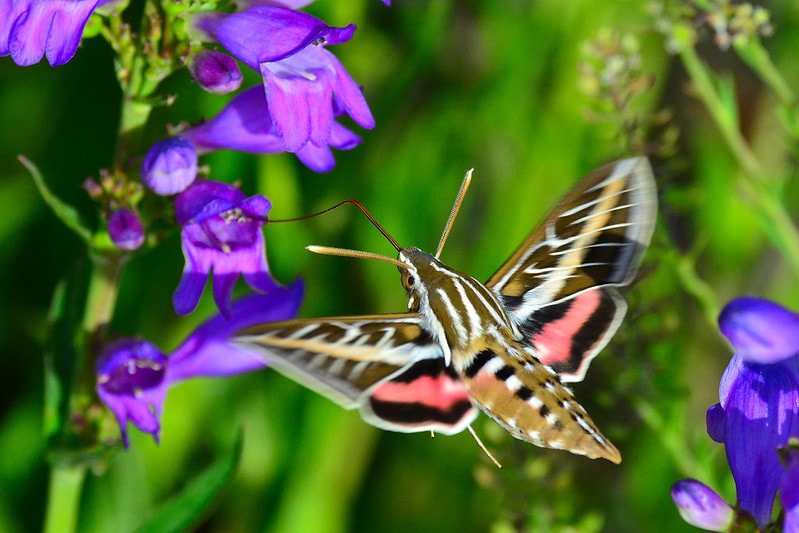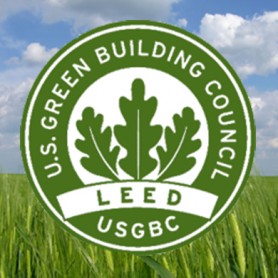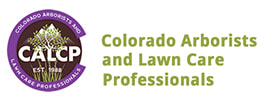|
Happy Earth Day! Today is the 51st anniversary of Earth Day. The very first one was on April 22, 1970.
Earth Day is meant to increase awareness of environmental issues and problems. It has become a popular time for many communities to gather to clean up litter, plant trees and gardens, etc.. Each year is a new theme, and this year is "Restore Our Earth." Here are some things you can do to participate - today and every day: 1. Clean up plastic and trash in your neighborhood. Or pick a park in your community to clean up. Don't forget to recycle plastic that you pick up! 2. Plant a tree. They capture carbon, they cool overheated places, they support pollinators. They bring in insect and bird species. Look HERE for suggestions as to the best tree to plant in your area. 3. Plan a native garden bed. Here in Colorado, it's a bit early to plant, but planning is the first (and FUN!) step. Consult your local nursery or look HERE if you need suggestions for native plants that do well in your area. 4. Support our pollinators! Select plants that attract bees, butterflies, hummingbirds, etc. Many are native plants, that are also deer resistant. You could also make a bee house! See how by clicking HERE. 5. Water wisely.
0 Comments
After this past weekends storm, it's hard to believe. And we probably still have another round or two of snow to get past. But it will get here, and we all know what that means - lawn care! SO just for fun, I thought I'd share a little bit about "The History of Lawn Care" for you to enjoy. Click below:
DID YOU KNOW? JLS is LEED (Leadership in Energy and Environmental Design) Certified! LEED is a green building certification program used worldwide. It was developed by the non-profit U.S. Green Building Council (USGBC) and it includes a set of rating systems for the design, construction, operation, and maintenance of green buildings, homes, and neighborhoods which aims to help building owners and operators be environmentally responsible and use resources efficiently. The other exciting news is that Colorado is one of the TOP 10 states for LEED green buildings! If you'd like to read more about the program, you can do so here: en.wikipedia.org/wiki/Leadership_in_Energy_and_Environmental_Design DID YOU KNOW?!
A flower can actually win a GOLD MEDAL! It's rare that any flower variety takes a gold, but one magical specimen was just awarded it after 17 years of no winners. AND it won in America and France! Profusion zinnias are wonderful and amazing if you want to plant a mass of color that lasts all season - perfect for large areas and commercial beds that need the drive-by pop! Our friends at Lawn and Landscape Magazine shared this fun article about this little pretty: www.lawnandlandscape.com/article/sakata-zinnia-wins-gold/ It's winter! But where is the snow? Not a whole lot has fallen yet this year, which means not much moisture for our trees and shrubs. They depend on us to help them out.
This is just a reminder that it's very important to water those plants that need it, even in winter. Basic guidelines are to do it on a warm, sunny day (50s), as early in the day as possible. Water slowly, so that it has time to be absorbed into the ground. Remember to drain and unhook your hose from the spigot when done! For more comprehensive and detailed information, here is a great article from the folks at CSU: https://extension.colostate.edu/.../fall-and-winter.../ In Colorado, opportunities for winter fun are numerous. We want to take just a moment of your time to remind everyone to dress appropriately for the weather, and pay attention to your body and what it is telling you. Whether you are playing or working in the cold, remember that hypothermia is a very dangerous medical condition that requires immediate attention. Here is some info to help you recognize the symptoms, along with basic first aid measures you can take to help yourself or a co-worker, friend family member:
Hypothermia is a medical emergency that occurs when your body loses heat faster than it can produce heat, causing a dangerously low body temperature. Normal body temperature is around 98.6 F (37 C). Hypothermia (hi-poe-THUR-me-uh) occurs as your body temperature falls below 95 F (35 C). When your body temperature drops, your heart, nervous system and other organs can't work normally. Left untreated, hypothermia can lead to complete failure of your heart and respiratory system and eventually to death. Symptoms Signs and symptoms of hypothermia include: • Shivering • Slurred speech or mumbling • Slow, shallow breathing • Weak pulse • Clumsiness or lack of coordination • Drowsiness or very low energy • Confusion or memory loss • Loss of consciousness Someone with hypothermia usually isn't aware of his or her condition because the symptoms often begin gradually. Also, the confused thinking associated with hypothermia prevents self-awareness. The confused thinking can also lead to risk-taking behavior. WHAT TO DO: • Call for help • Remove any wet clothes, hats, gloves, shoes, and socks. • Protect the person against wind, drafts, and further heat loss with warm, dry clothes and blankets. • Move gently to a warm, dry shelter as soon as possible. • Begin rewarming the person with extra clothing. Use warm blankets. Other helpful items for warming are: an electric blanket to the torso area and hot packs and heating pad on the torso, armpits, neck, and groin; however, these can cause burns to the skin. Use your own body heat if nothing else is available. • Take the person's temperature if a thermometer is available. • Offer warm liquids, but avoid alcohol and caffeine, which speed up heat loss. Don't try to give fluids to an unconscious person. Colorado is known for dramatic temperature swings, hard freezes, and often dry conditions.
Gardening can be a challenge! It is also becoming increasingly important to consider our ecosystem and be mindful of water use. More and more we move into neighborhoods that were once habitats for wildlife. Deer, rabbits, coyotes, birds, bears, etc. have been displaced or are trying to live alongside us. Pollinators like bees, butterflies, and hummingbirds need our help to thrive. Non-native plant selections require more resources to survive and often struggle in our somewhat harsh environment. More water, more fertilizer, more herbicides are rarely the solution to a thriving and responsible landscape. Educating ourselves and choosing our plants/shrubs/trees wisely is a more likely way to succeed and create a landscape you will be proud of and love to care for. A wonderful resource for choosing native trees and shrubs is the CSU Extension website. Here are two links that you will find helpful: https://extension.colostate.edu/topic-areas/yard-garden/native-trees-for-colorado-landscapes-7-421/ https://extension.colostate.edu/topic-areas/yard-garden/native-shrubs-for-colorado-landscapes-7-422/ Fall is coming and it is a wonderful time to plant perennials:
https://extension.colostate.edu/topic-areas/yard-garden/native-herbaceous-perennials-for-colorado-landscapes-7-242/ 1. The state flower of Colorado, the Columbine, is actually a wildflower! It was named the official state flower in 1899 - voted by school kids! The blue petals represent the sky, the white ones stand for snow, and the yellow center is a symbol of Colorado's gold mining days! 2. There are 3 wildflowers seasons in Colorado. April - June is the spring show. June-August is PEAK season! Aug - Oct is the fall display. 3. There are more than 750 types of wildflowers found in Colorado. There are many apps you can load to your phone so when you are hiking or biking, you can look them up as you go. Some are free, some are not. Here is a good start, especially if you travel: https://www.wildflowersearch.org 4. It's actually illegal to pick wildflowers! 5. Some are toxic to humans AND 4-leggeds! Best not to eat any unless you know which ones to avoid. Larkspur, Death Camas, Water Hemlock are a few. 6. Colorado has a wildflower capitol! And they host a wildflower festival each year. It's Crested Butte! Many pine trees along the front range have had a tough time of it this year! If you are seeing brown needles and trees that appear dead, read more below to understand what has happened, and what you can do about it! And what about my other plants? Lilacs, and Boxwoods, and Ash trees? Read the below article from our friends at the Denver Post.
Emerald ash borer (EAB) is an insect native to Asia. It was introduced into North America sometime during the 1990s.
EAB attacks and kills all true native North American ash trees, including green, white, black and blue ash, and their cultivars, including “autumn purple ash,” a popular white ash variety in Colorado. Although rare in Colorado, white fringetree also has been documented as susceptible to EAB. This pest kills stressed and healthy trees and is so aggressive that ash trees may die within two years after they become infested. It is possible for EAB to infest an ash tree for up to four years before visible signs of decline in the tree occur. EAB now poses a serious threat to Colorado’s urban and community forests, where ash trees comprise an estimated 15 percent or more of all trees. The Metro Denver area alone has approximately 1.45 million ash trees, which provide an estimated $82 million annually in services including stormwater mitigation, energy savings and increased property values. For communities on Colorado’s Front Range and northeast plains, it’s only a matter of time before this pest will arrive. Without ongoing treatment, any infested tree will die. The above information is taken from the Colorado State Forest Service website. For the most current and comprehensive information, please click below to READ MORE. |
JLS Landscape & Sprinkler, Inc.JLS has been maintaining quality landscapes for corporate and commercial clients in Colorado for over 40 years. Archives
September 2023
Categories |
|
|
Quick Links |
Get in touch
|
© 2020 JLS Landscape & Sprinkler, Inc. - Privacy Policy






 RSS Feed
RSS Feed










